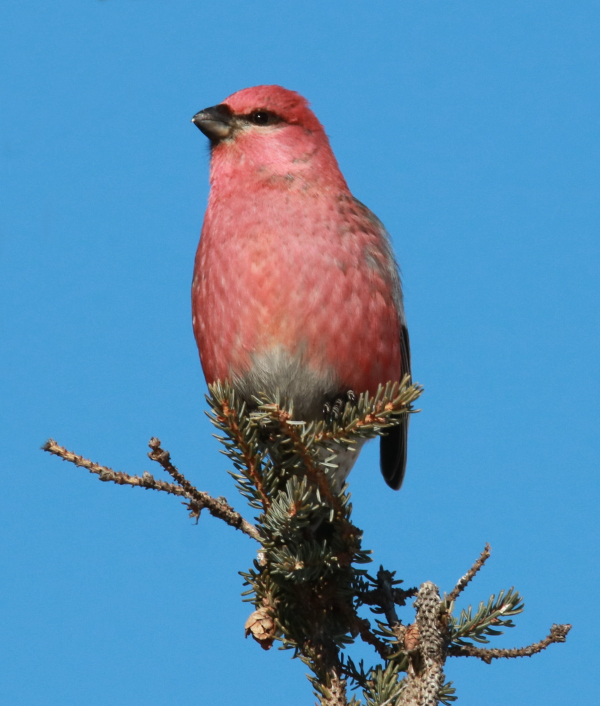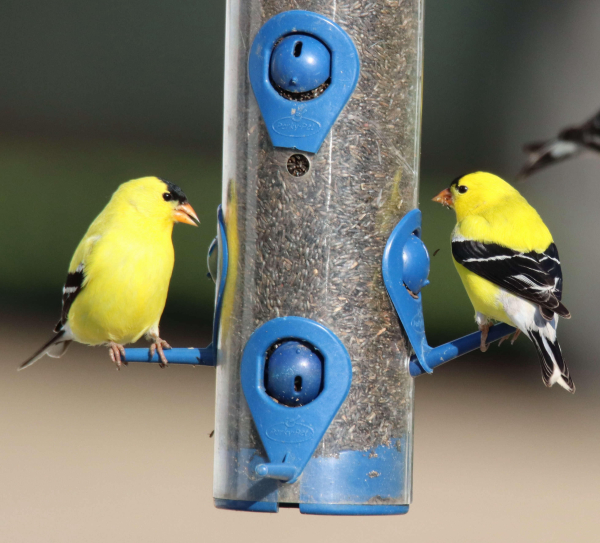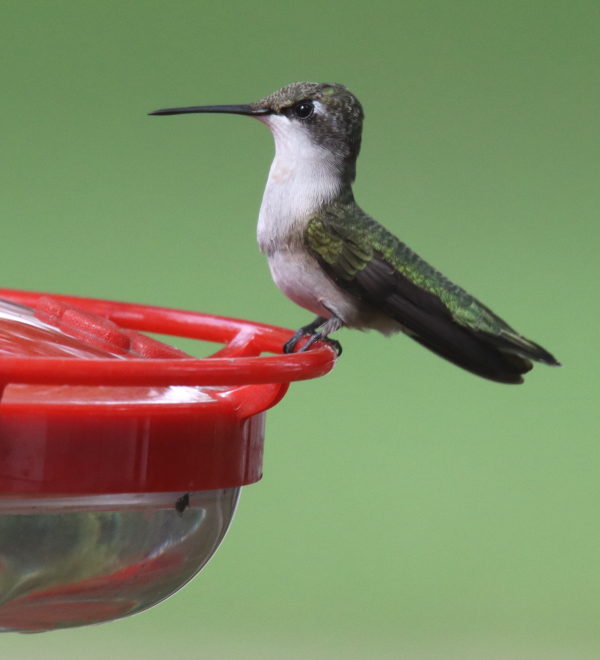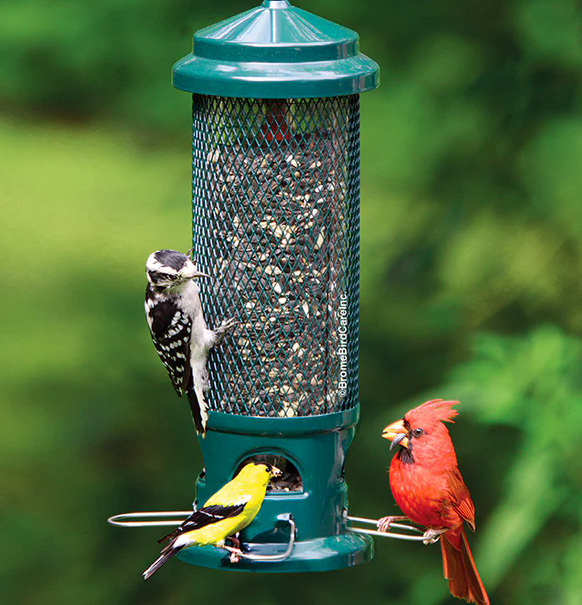Boreal Feeder Birds & Winter Finches
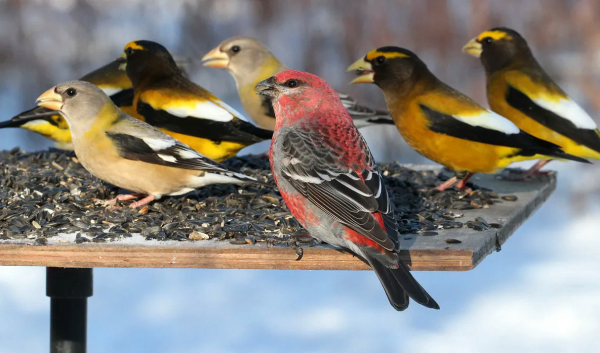
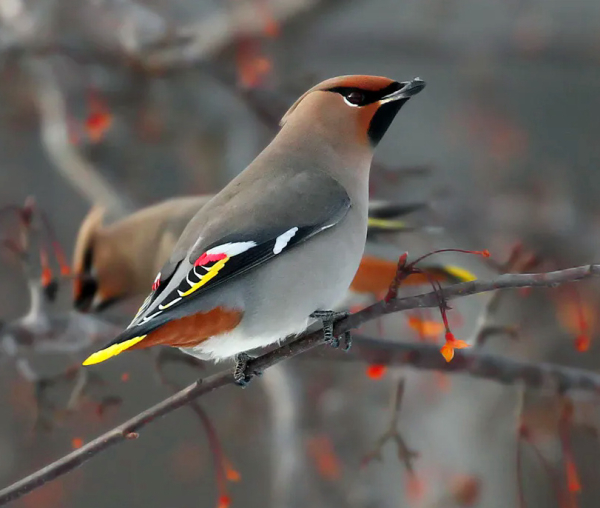
During winter we birders anticipate the arrival of northern visitors to our yards and feeding stations, birds that bring increased activity and color to our yards. Among the most anticipated are the variety of finches ranging from Pine Grosbeaks and Evening Grosbeaks to Common Redpolls and Pine Siskins. There are the Red and White-winged Crossbills too, as well as such favorite boreal birds as Red-breasted Nuthatches, Blue Jays, and Bohemian Waxwings.
Movements of these birds south are not as regular as we witness with so many migratory species; instead, these birds remain in the northern forests as long as there are abundant foods, including pine and birch seeds. Some years few if any boreal birds and winter finches venture south, but during years when trees in the boreal forest produce few seeds, the “winter finches” fly south in search of foods, which includes our well-stocked feeders with nutritious seeds.
Whether these interesting boreal birds would appear in northern states and southern provinces tended to be something of a guessing game, until the turn of the century. That’s when a group of volunteers – dedicated birders and biologists – began studying the annual seed production among the principal forest trees that produce seeds that finches feed on: Primarily white spruce, black spruce, tamarack, white pine, red pine, birches, oaks, and beech trees.
The current organizer and author of the Winter Finch Forecast is Tyler Hoar, who lives in the heart of the northern forest in Ontario. He was recently interviewed by Audubon magazine to share some interesting insights into how the annual forecast is conducted. To read his interview, you can refer to This Year’s Bonanza of Boreal Birds Once Again Bears Out the Winter Finch Forecast | Audubon
A Winter Finch Update
The update provided below was published by Matt Young, also with the Finch Research Network, in this article: Irruption Alert: Like an Incoming Tide, Here Come More Finches – FINCH RESEARCH NETWORK (finchnetwork.org)
This year’s Winter Finch Forecast is already proving to be on track for several species, starting with the wave of Evening Grosbeaks that moved into the eastern, upper half of southern Canada and northern United States. These iconic finches have already been reported as far south as North Carolina, Virginia, Tennessee, Iowa, and Missouri in the east, and numbers are increasing and building in some locations in the western Great Lakes region.
Pine Grosbeaks are moving south nicely now, and with relatively subpar fruit crops in the east, look for random sightings farther south than usual. Also look for these big finches to be feeding in towns on crabapples, but check ash trees too as they relish the samaras. Check conifer groves and forests of spruce and larch also, because they often feed on the most recent growth on the tips of branches. Pine Grosbeaks have been reported in increasing numbers in southern Ontario and Quebec along with the northern region of the western Great Lakes. Sightings are increasing in Minnesota, Wisconsin, Michigan, Maine, New Hampshire, Vermont, and as far south as western New York.
Purple Finches, often harbingers of a finch flight in the east, can now be found in good numbers in some southern states, with a few making it as far as the Gulf Coast. Look for numbers to continue to push southward.
Small numbers of Red Crossbills and Pine Siskins are also on the move, and there are a few interesting small scale movements to highlight: Both species appear to be moving west to east from the Rockies into areas of the Great Plains states of Kansas, Nebraska, and Texas.
Bohemian Waxwings are gorgeous boreal forest nesting birds that search for fruit and berries including crabapples mountain ash, and buckthorn, similar to the activities of Pine Grosbeaks. The species is making an earlier than normal push into the northeastern states, which is suspected to continue and expand into the Great Lakes region.
If you are interested in reviewing the initial Winter Finch Forecast, which was featured in a Backyard Birding article this fall, it was published by Tyler Hoar at WINTER FINCH FORECAST 2022 – FINCH RESEARCH NETWORK (finchnetwork.org)
Are you seeing any winter finches or other boreal forest birds so far this year? Share your backyard birding experiences and photos with The Birding Wire at editorstbw2@gmail.com

